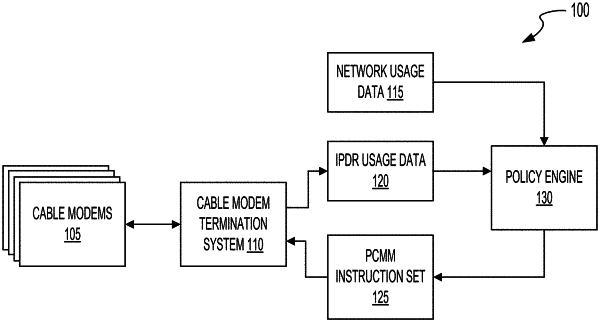| CPC H04L 41/0893 (2013.01) [H04L 12/2801 (2013.01); H04L 41/0894 (2022.05); H04L 41/0896 (2013.01); H04L 43/0876 (2013.01); H04N 21/6118 (2013.01)] | 20 Claims |

|
1. A method of allocating signal processing resources for cable modem endpoints, comprising:
monitoring, by a policy engine comprising one or more processors and a memory, usage data of a plurality of cable modems that access a channel of a cable network via a cable modem termination system;
detecting, by the policy engine, from the usage data, a congestion condition on the channel of the cable network;
identifying, by the policy engine, a first cable modem and a second cable modem of the plurality of cable modems of the cable network that contribute to the congestion condition to a greater degree than other modems of the plurality of cable modems based on a bandwidth allocation of a respective service package of each of the first cable modem and the second cable modem, the respective service package used to access the cable modem termination system, wherein each cable modem of the plurality of cable modems indicates bandwidth of the cable modem can be reduced in accordance with a network policy;
excluding, by the policy engine, the first cable modem from bandwidth reduction based on the respective service package of the first cable modem;
determining, by the policy engine, that the congestion condition satisfies a congestion threshold of the network policy;
sending, by the policy engine, instructions to the cable modem termination system that reduce the bandwidth of the second cable modem and not the first cable modem;
responsive to sending the instructions to the cable modem termination system, determining, by the policy engine, that the second cable modem remains contributing to the congestion condition to a greater degree than the other modems of the plurality of cable modems;
sending, by the policy engine, additional instructions to the cable modem termination system that further reduce the bandwidth of the second cable modem; and
automatically generating, by the policy engine, instructions for the cable modem termination system to stop reducing the bandwidth of the second cable modem upon detecting that usage of the channel of the cable modem termination system has fallen below a predetermined threshold.
|